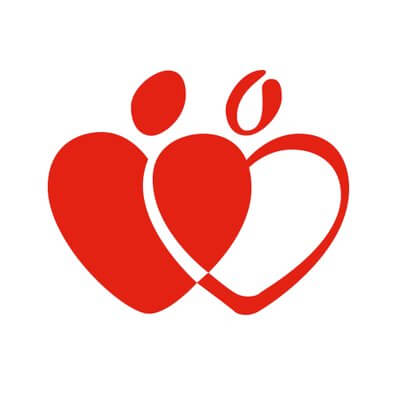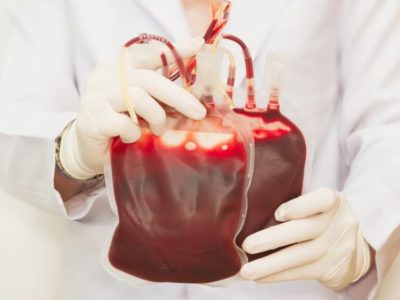The idea of blood donation can sound quite scary and inspire a medical case of the heebeegeebees. We’ve all heard the typical excuses. “I don’t like needles,” “I’m scared of blood,” “I don’t have time” or “I just don’t want to.” Although 38 percent of the US population is eligible to donate blood, less than 10 percent of the population donates. College campuses tend to host many blood drives because of the number of eligible donors they have. C’mon, people. Get that number up. A few minutes of discomfort can literally save lives. We want to clear up any confusion about blood donation and drives, helping increase the number of willing blood donors.
Here’s everything you need to know about blood donation and blood drives.
Blood Donation Q&A
How long does blood donation take?
According to the Red Cross, you can donate blood in less time than it takes to go through a drive-thru. Blood donation takes very minimal time out of a college student’s busy schedule. The actual donation takes only about 8 to 10 minutes.
How does the blood donation process work?

Before showing up to your appointment, complete the donor registration. Make sure to bring a license or other form of ID to the place of donation and you will answer questions about places you traveled and health history.
You get to see whether you are healthy by having a hemoglobin, temperature, blood pressure and pulse check. Then a nurse inserts a sterile needle into your arm (feels like a quick pinch that is over in seconds) and relax while the bag fills up with your blood. Then you get a bandage, snacks and bragging rights. Oh, and if you show up late to class, tell your professor, “Be nice to me, I donated blood.”
Who is eligible for blood donation?
First of all, you have to weigh over 110 pounds to participate in blood donation. The age you can start donating depends on the state, but typically is 17 years of age and older. You have to feel well the day of and in good health overall. Sorry, poor unfortunate freshmen with mono—you have to wait.
Are there further restrictions on blood donation?
Yes, but that gets into specifics. If you’ve had leukemia or lymphoma for example, you cannot donate blood. Pregnant women cannot donate blood. If you have or have had gonorrhea or syphilis, you have to wait 12 months after treatment to donate. Those anemic or borderline anemic also cannot donate blood. “I would totally donate if I could! But unfortunately, I am anemic. That means that I do not have enough iron in order to donate,” University of Michigan junior Chloe Noto explained.
Do tattoos affect blood donation?
Certain states do not regulate tattoo facilities such as New York or District of Columbia. If you got a tattoo in a non-regulated tattoo facility, you have to wait 12 months after you got the tattoo to donate. If you got a tattoo from a state-regulated entity with sterile needles and non-reusable ink, then you can participate in blood donation.
https://youtu.be/pi5rQCWDwT8
Is blood donation safe?
Yes. You only risk mild discomfort afterwards, which you can try to prevent by staying hydrated and eating iron-rich foods. “Donating blood is a safe. New, sterile needles are used to get your blood and then they are discarded. You may feel a little dizzy or lightheaded after your donation but that’s typically it,” Red Cross employee Jimmy Dangie said. If you feel any minor symptoms after your donation, it certainly won’t feel as overwhelming as receiving syllabi on the first day of class seeing all the assignments you have to do that semester.
Who is there to assist you during the blood donation?
No one. You are all alone left to bleed. Just kidding. The Red Cross provides nurses to help during the process. They take your blood pressure and check your iron levels before you donate and remain super kind and patient during and after your blood donation. “The nurses are really nice, really supportive, and are there to take care of you for whatever you need! For me, I was really nervous at first about donating but the nurses reassured me and helped calm me down,” University of Michigan senior Noah Hendrickson said.
What happens after blood donation?
Did someone say…FOOD? That’s right, you get free snacks. “The Red Cross provides free snacks such as goldfish and Oreo’s to bring your blood sugar back up and help you feel better after the donation. That was reason enough for me to go…if anything-free food for broke college kids,” University of Virgina junior Sam Aldershof said. Sometimes you also get other perks such as Buy One, Get One coupons from places such as Chipotle or Bruegger’s Bagels. YUM.
What does the Red Cross do with your blood donation?

Unlike vampires, the Red Cross does not consume your blood (phew!) Instead, the blood goes to a Red Cross blood component lab and is processed into several different categories: red blood cells, plasma, platelets and/or cryoprecipitate. Your blood alone may go to as many as three different people. Third life saved is the charm, am I right?
What should I eat before and after the blood donation?
Many people look forward to complementary cookies to combat light-headedness. Dangie advised additional steps. “Lie down. If you can’t though, sit down somewhere and take deep breaths. Make sure to stay away from significant physical activity, drink lots of water, and eat iron-rich foods,” Dangie said.
In the weeks before your donation, boost up your iron levels by eating iron-rich foods. Take advice from Popeye the Sailor and consume that spinach. Have some fun and get creative with iron-rich dishes. Snag a tuna sandwich for lunch, have some friends over with shrimp appetizers, or make a nice roast beef and cut it like the Grinch cuts the Roast Beast. If you feel vegan vibes, make a dish with tofu, beans, lentils, strawberries, watermelon, or enriched pasta. After your blood donation, treat yourself to an ice cream or soda to boost up your blood sugar and continue to eat iron-rich foods to help replenish.
Top 3 Things to Pack for Donating Blood
1. Some form of ID: A license counts and a donor card counts if you’re not a first timer.
2. Water: Stay hydrated and drink extra fluids before, throughout, and after the donation process. Más agua por favor.
3. Music/headphones: During the blood donation, you lie down waiting for the bag to fill for 8-10 mins, so relax with some good tunes. Pull out your Spotify or Apple Music and get your chill on.
Top 3 Blood Drive Twitter Handles

This organization saves lives by providing safe blood. Members get points for each blood donation and can trade these points in for prizes.
2. @my1blood

This blood center has “enter to win” prizes for blood donors.

This program encourages students in the U.K. to donate and give back to the community.
Check out other articles about blood donation and health
https://www.collegemagazine.com/6-reasons-why-you-should-give-blood/
https://www.collegemagazine.com/am-i-drinking-blood-or-pepsi/
https://www.collegemagazine.com/5-healthy-habits-youll-want-to-try-so-you-wont-die-during-finals/



















